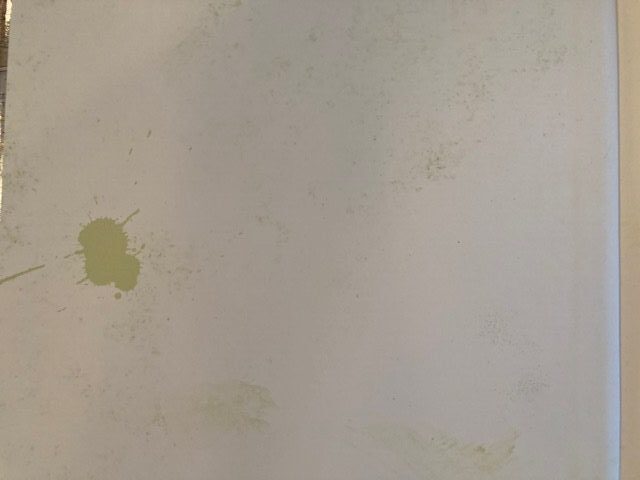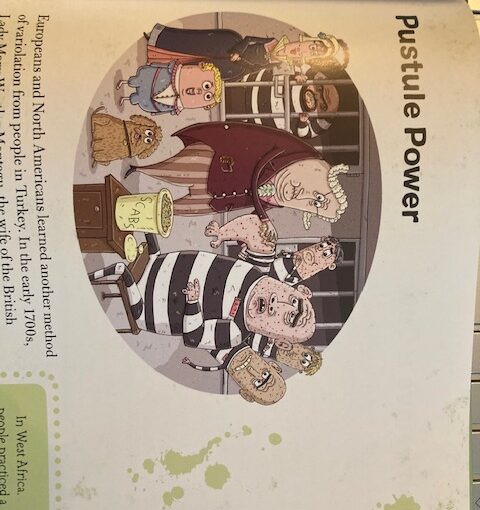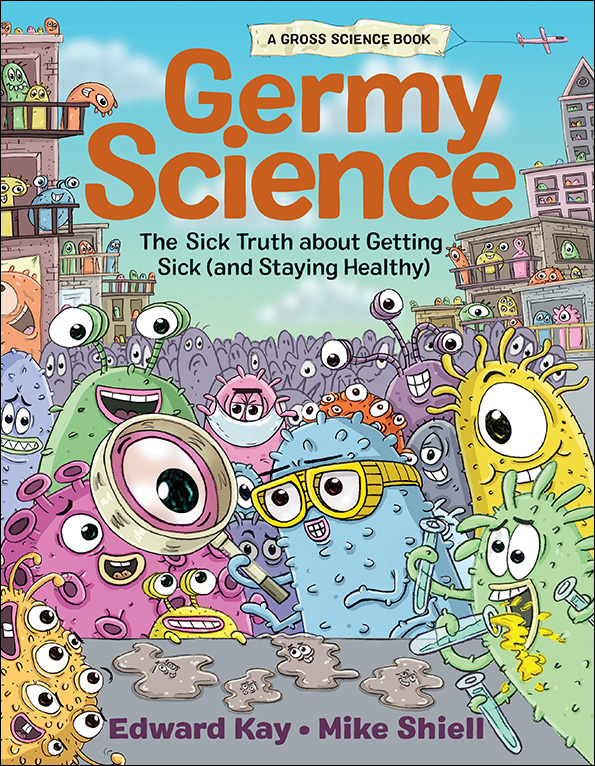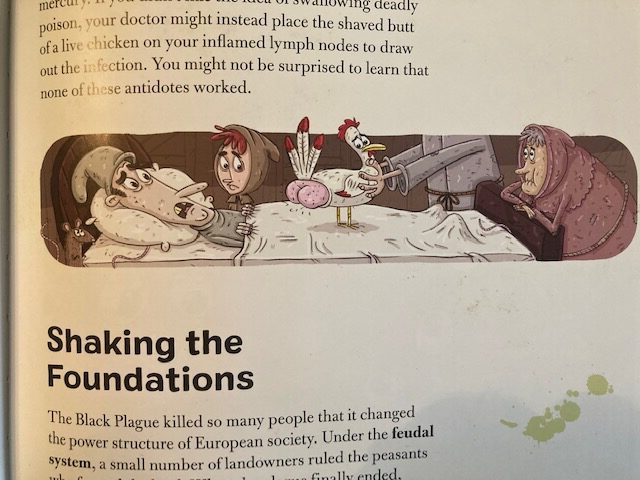Some books that cross our desk take a moment or two to peg down exactly who’s the audience for it. Other books hit the nail so squarely on the head that one might question if the book was ghostwritten a member of its intended audience. Gross Science is a series of illustrated reference books from Kids Can Press and Germy Science is the second release within that series. It’s written by Edward Kay and while I’ve never personally met him, his online photo appears to be that of someone who is older than a fifth-grader.
Germy Science slips into the clothing and the soul of a fifth-grade reader. It’s entertaining, STEM-based non-fiction, with each page highlighting a different aspect of germs. These pages don’t lead up a narrative story, it’s a couple of paragraphs on each of them that do a somewhat deeper dive into what makes germs tick. True to form in what would interest a typical fifth-grade student, and to the title of the series, these facts are often gross.
A cup of snot a day keeps the doctor away. Three infected mice, spontaneous maggots, and sour grapes and tiny shapes are a couple of the headlines that readers will see in the book. The pages in Germy Science are written in a manner that’s smart and very intelligent for any reader who’s able to digest the content. However, this is a book that’s aimed at ten or eleven-year-old students, so there’s also a high degree of humor that’s woven into every paragraph.

It’s science-based humor that grabs your attention by making quips based on puns, irony, incredible facts, or disgusting truths. Where Germy Science will really grab those upper elementary school ages are the illustrations that drag in those reluctant readers. Each page has at least one full-color illustration of anthropomorphic germs doing their thing as they try to rebel against a band-aid, bathe in a glass of wine, or fall off of the hands of a doctor who has just discovered they’re the reason why people are dying. It’s worth noting that behind Doctor Semmelweis, as he’s washing his hands of the pesky germs, are two other doctors shaking their heads as they castigate him for implying that they weren’t clean.
The text in the book sets up many of the illustrated jokes that the book delivers. After they read the text they’ll look at the illustrations, think about what they just read, and then in many cases, re-read the text to see if they missed another joke. It’s a very clever (and disgusting) way to get kids to re-read the text, especially non-fiction that some audiences have become adverse to, or are more often than not, have a preferred book series that they read.
In Germy Science, there are different colored text blocks that highlight a different angle of what the page is teaching. Today’s kids can read about pox parties, a way that parents back in the olden times would get as many in their friendship circles as possible into herd immunity. As with emerging research books for these ages, it has a glossary, index, and further reading column at the end of it.
It also has that little touch that brings in, again, those reluctant readers who need something else to engage them. “What’s that?”, our ten-year-old asked when he opened the book. He wanted to know if that was real and was looking for reassurance that it was OK to touch the book. You see, when you open Germy Science, on the immediate back of the front cover, you’ll see green stains on those two pages. It looks like someone with a really bad cold slowly ran their nose a foot or two over the book, allowing droplets of goo, slime, or snot to dribble onto them. That is the extra mile that readers will get when they jump into Germy Science, a book that’s so engaging we’re on the hunt for the first book in the Gross Science series.
Germy Science, The Truth About Getting Sick (and Staying Healthy) is a Gross Science Book and by Edward Kay with illustrations by Mike Shiell.
There are affiliate links in this post.








 Facebook
Facebook Twitter
Twitter Flickr
Flickr GooglePlus
GooglePlus Youtube
Youtube